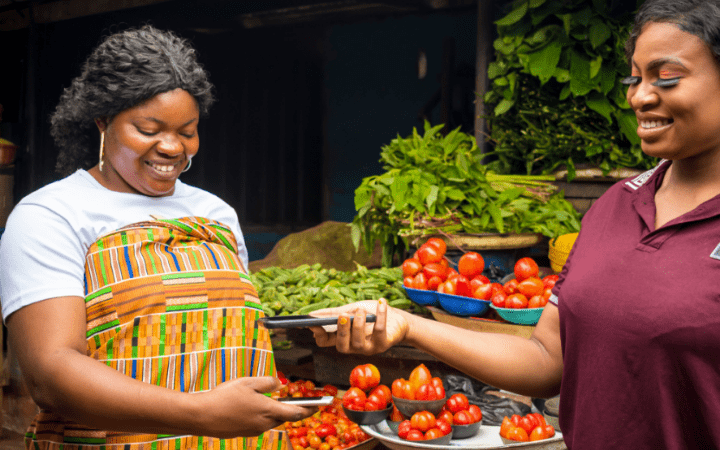What Is The Impact Of Mobile Money On African Countries?



There has been a significant increase in mobile money over the past 10 years, especially in sub-Saharan Africa. As of December 2018, there were approximately 135 mobile money implementers and 400 million users in sub-Saharan Africa. While in some countries, such as South Africa, the adoption of mobile money has been slower than the other countries. It has succeeded in reaching almost one-third of those who do not have access to traditional financial institutions.
In Somalia, mobile money payments have increased at such a pace that they have outperformed cash transactions. According to the World Bank, over 70% of Somali people have used mobile payments over the past few months. However, cash payments still occupy an important position in the region.
Today, In this article, we will discuss what mobile money is and the impact of mobile money on sub-saharan africa.
So let’s get started!
What Is Mobile Money?
Mobile money is a digital payment platform that enables the transfer of money among mobile devices. The technology is mounted on the device’s SIM card and can be used on standard devices and smartphones. Users may receive, withdraw and remit funds without being logged in to the official banking system. It is different from mobile banking where users connect through Internet-connected mobile devices to manage their bank account funds.
The deployment of mobile money in Africa enables those living in extreme poverty to take part in financial transactions without a bank. The use of mobile money in Africa offers a number of benefits. One of the fintech success stories of Africa is m-pesa. It has significantly changed the use of mobile money use in the Africa region.
Mobile Money’s Impact on African Countries:
Mobile money has helped bridge the financial exclusion gap in low- and middle-income countries. The positive impact of mobile money on people, homes, and businesses has been shown through an increasing number of studies and empirical evidence.
Mobile money minimizes transaction costs for users and assists households in managing their cash flows more efficiently. This mobile money payment solution allows customers to streamline consumption, manage risk and build working capital.


It also enables businesses to invest and accumulate capital over time, supporting the creation and expansion of businesses and facilitating faster and more efficient government transfers. Mobile money has also supported other sectors, including education and utilities.
Overall, mobile money can have a significant impact on the monetary and financial stability of African countries.
1. Mobile Money And Inflation:
Mobile money can increase the ability of companies to make productive investments and, consequently, reduce prices. The new money brought into the system creates wider credit opportunities. And this encourages more productive investment and, again, cuts prices.
As the more money consumers have, the more they can spend. Eventually, this will lead to more demand for goods/services and rising inflation.
Furthermore, the increase in mobile money transactions and balances has increased both currency velocity and monetary multiplier, while loosening the link between these variables and inflation. The countries from sub-Saharan Africa are the fastest-growing population of expats. This expat population could be a major driver of cross-border remittance solutions in Africa in the coming years.
2. Mobile Money & Monetary Stability:
The purpose of the monetary policy of any central bank, including African regulators, is to control the money supply and set interest rates. By doing this, regulators ensure price stability. If mobile money increases the amount of currency and assets in the banking system, it will be associated with a larger money multiplier because there is more widespread money relative to a given monetary base, whose small changes can drive a high impact on the money supply.
Price stability can be done via several methods:
- Variation in liquidity available to commercial banks in order to meet their reserve needs;
- Modifying short-term interest rates;
- Perform open market operations.
Moreover, if more of a nation’s money supply is in the banking system, and a greater number of households have access to formal financial markets, it will ultimately help boost revenue with a mobile money solution, promoting savings and credit.
Consequently, more economic activity will be subject to central bank interest rates. This means that policy rate changes will have a more direct impact on domestic decisions about intertemporal consumption and investment, and hence on price stability.
3. Mobile Money & Financial Stability:
Some experts caution that mobile money may create additional systemic risks for the entire banking system. While others predict that this will not happen as the technology refers to a payment service, mobile money is a payment service and the actual deposits are saved on trust or escrow accounts.
Mobile money does not only keep customer funds safe, but it also ensures that, at any given time, there is a digital equivalent of cash that leaves the ecosystem. This makes sure that financial shocks cannot be transmitted to other payment systems.
There are also concerns in some markets that mobile money will change the landscape of traditional banks, which may be detrimental to commercial banks. However, mobile money providers and banks are expanding in Africa, each in its own direction. As the former is not subject to supervisory regulation, they cannot offer banking or credit deposit services.
On the other end of the spectrum, mobile money account holders that are also banked can use mobile money to make digital payments in a convenient manner, but will maintain their savings primarily in the commercial bank and will continue to have access to credit services from traditional suppliers. This means that mobile money has little impact on the commercial banks’ clientele.
In A Nutshell:
Looking ahead, We see the future impact & growth of mobile money in Africa. It has accelerated the shift from cash towards digital payments. Despite the peak in the use of mobile money across the region, the threshold hasn’t reached for all services yet. It is worth looking further at how mass adoption across the region spread.


